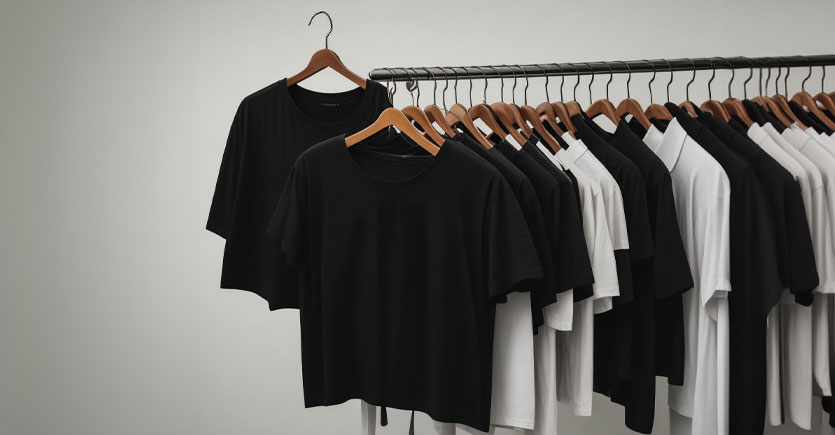Introduction
Merchandising is a crucial aspect of retail success that often goes unnoticed by customers but is meticulously planned by successful businesses. Effective merchandising can transform a simple retail space into an engaging environment that attracts customers, encourages them to explore, and ultimately drives purchases.
Table of Contents
In this blog, we will explore the concept of merchandising, its critical role in the retail industry, and how it can significantly impact your business. We will start by defining merchandising and discussing its importance, then provide actionable tips for creating effective product displays that captivate your customers.
The primary goal of this blog is to help you understand the importance of merchandising and how you can leverage it to boost your business. We aim to:
- Explain What Merchandising Is and Why It Matters:
- Define the concept of merchandising and its various elements.
- Discuss how effective merchandising can attract customers, enhance the shopping experience, and drive sales.
- Provide Actionable Tips for Creating Effective Product Displays:
- Offer practical advice on arranging and presenting your products to maximize their appeal and increase sales.
- Cover essential techniques such as creating focal points, using the rule of three, and incorporating seasonal themes.
What Merchandising Is and Why It Matters
Understanding Merchandising
Merchandising refers to the strategic arrangement and presentation of products within a retail environment. The goal is to make products attractive, accessible, and appealing to customers, ultimately driving sales. It involves a variety of tactics designed to enhance product visibility and encourage purchasing behavior.
Key Elements of Merchandising
- Product Placement: Positioning products strategically is crucial for maximizing visibility and encouraging impulse buying. High-margin items should be placed at eye level, while complementary products should be grouped to facilitate additional purchases.
- Signage: Effective signage provides critical information, highlights promotions, and guides customers through the store. Well-placed signs can direct traffic flow, inform customers about product benefits, and draw attention to special offers.
- Lighting: Lighting plays a vital role in enhancing product displays. It can create a welcoming ambiance, highlight specific items, and influence the overall perception of the store. Proper lighting can make products look more appealing and draw attention to key areas.
- Display Arrangements: It is essential to design aesthetically pleasing and easily navigable displays. Techniques like color coordination, thematic setups, and props can make displays more engaging and visually appealing.
Importance of Merchandising
- Attracting Customers:
- First Impressions: Well-designed and visually appealing displays can attract passersby and entice them into the store. First impressions are critical, setting the tone for the customer’s shopping experience.
- Window Displays: Eye-catching window displays can significantly increase foot traffic by making a strong initial impression. These displays should be regularly updated to reflect new arrivals, seasonal themes, and special promotions.
- Enhancing the Shopping Experience:
- Customer Engagement: Engaging and interactive displays can make the shopping experience enjoyable and encourage customers to spend more time in the store. Interactive elements such as touchscreens, product demos, and sample stations can increase engagement.
- Ease of Navigation: Clear signage and logical product placement help customers find what they need quickly and discover new products. An organized store layout reduces frustration and enhances the overall shopping experience.
- Driving Sales:
- Impulse Purchases: Strategically placing high-margin items and complementary products can boost sales by encouraging impulse purchases. For example, placing small, attractive items near the checkout area can tempt customers to add them to their purchases.
- Promotions and Discounts: Highlighting special offers and discounts can drive immediate sales and clear out old inventory. Promotions such as buy-one-get-one-free (BOGO) and flash sales can create a sense of urgency and increase sales volume.
- Psychological Impact:
- Influencing Behavior: The arrangement of products can influence consumer behavior and purchasing decisions. For instance, bright lighting can make products appear more attractive while neatly organized shelves convey quality and care.
- Visual Appeal: Using the rule of three (grouping items in sets of three) creates a visually balanced and appealing display that naturally draws the eye. This technique leverages the psychological preference for odd numbers, which are perceived as more exciting and engaging.
- Brand Differentiation:
- Unique Identity: Effective merchandising helps differentiate your brand from competitors by creating a unique and memorable shopping experience. Unique displays and innovative merchandising techniques can set your store apart and enhance brand recognition.
- Building Loyalty: Distinctive and pleasant shopping environments can build brand loyalty and encourage repeat visits. Customers who have a positive experience are more likely to return and recommend your store to others.
- Creating Memorable Experiences:
- Lasting Impressions: Memorable and creative displays leave a lasting impression on customers, increasing the likelihood of return visits and positive word-of-mouth. Engaging and visually stunning displays can make shopping a memorable experience.
- Customer Satisfaction: A well-merchandised store enhances overall customer satisfaction, encouraging them to recommend the store to others. Satisfied customers are more likely to become repeat customers and brand advocates.
By mastering these aspects of merchandising, you can transform your retail space into an inviting and compelling environment that attracts customers and encourages them to make purchases.
Tips for Effective Product Displays
Creating compelling product displays is an art that combines understanding your customer, strategic planning, and creativity. Here are some actionable tips to help you design displays that captivate your customers and drive sales:
Understand Your Customer
- Research and Understand Your Target Audience:
- Gain insights into your target audience’s preferences, behaviors, and shopping habits. Use this information to tailor your displays to meet their needs and expectations.
- Conduct surveys, analyze sales data, and observe customer behavior in-store to gather valuable information.
- Tailor Your Displays:
- Design your displays to align with the preferences and interests of your target audience. If your customers are eco-conscious, incorporate sustainable materials and highlight eco-friendly products.
Create a Focal Point
- Use Eye-Catching Displays:
- Create a focal point in your displays to draw attention to key products. To make these products stand out, utilize some of the previously mentioned techniques, such as color contrast, lighting, and signage.
- Position high-demand or new products at eye level to ensure customers quickly notice them.
Maintain Cleanliness and Organization
- Ensure Displays Are Neat and Organized:
- Keep your displays free of clutter and ensure products are neatly arranged. A tidy display enhances the perceived quality of your products and makes shopping more enjoyable.
- Regularly update and refresh displays to keep them exciting and engaging. Remove any damaged or outdated items promptly.
- Organize for Ease of Navigation:
- Ensure that your store layout allows customers to navigate and find products easily. Clear pathways and well-organized sections can reduce frustration and enhance the shopping experience.
Utilize Cross-Merchandising
- Create Thematic Displays:
- Develop themed displays that combine products related to a specific activity or season. For instance, create a “Summer Picnic” display with picnic baskets, blankets, and outdoor games.
Incorporate Seasonal Themes
- Update Displays for Seasons and Holidays:
- Update displays to reflect seasonal themes, holidays, or special events to keep your store looking fresh and relevant. This can create a sense of urgency and encourage customers to make timely purchases.
- Use props, colors, and signage that align with the season or holiday to create an immersive shopping experience.
- Leverage Seasonal Promotions:
- To boost sales, tie promotions into your seasonal displays. For example, offer discounts on holiday-themed items or bundle deals during the back-to-school season.
Use Interactive Displays
- Incorporate Interactive Elements:
- Engage customers by incorporating interactive elements into your displays. Product demonstrations, touchscreens, and sample stations can enhance the shopping experience and encourage customers to spend more time in your store.
- Interactive displays can also give customers hands-on experience, helping them make informed purchasing decisions.
- Encourage Customer Participation:
- Create displays that invite customers to interact, such as “try-before-you-buy” stations or DIY project displays. This will not only make shopping more enjoyable but also increase the likelihood of purchases.
Conclusion
Now that you understand the importance of merchandising and practical tips for creating effective product displays, it’s time to implement this knowledge. Start by evaluating your current merchandising strategies and identify areas for improvement.
Consider implementing one or two of the tips from this blog to see immediate improvements in your store’s appeal and sales performance. Whether creating a compelling focal point, incorporating seasonal themes, or using interactive displays, small changes can make a big difference.
- The Importance of an Appendix in Your Business Plan - November 23, 2024
- Why Monthly Financial Statements Are Crucial for Business Success - November 20, 2024
- Utilizing Outside Consultants and Professionals: Enhancing Your Management Team - November 17, 2024






